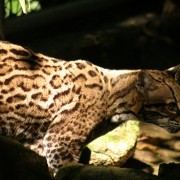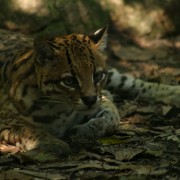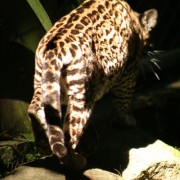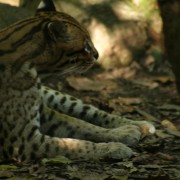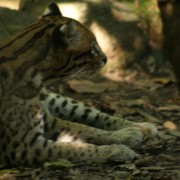Biodiversity
 Ocelot
Leopardus pardalis | Linnaeus, 1758
Ocelot
Leopardus pardalis | Linnaeus, 1758
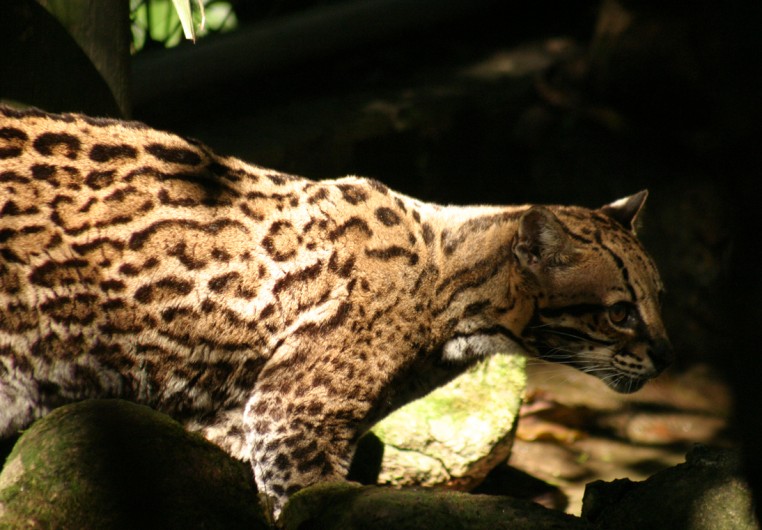
Characteristics: Species measuring 67 to 101cm in length, with proportionately short tail. It has a slender body and large paws, with extremely variable basic coloring on its back, which ranges from quite pale yellowish-gray or light-yellow to an ocher-brown, with several intermediate shades. Its belly is whitish, and the black spots tend to form open rosettes that coalesce forming longitudinal stripes on its sides.
Distribution: From Southwest Texas and Western Mexico to Northern Argentina. In Brazil, it occurs in all regions, except for Southern Rio Grande do Sul.
Habitat: Savanna, "caatinga," wetlands, but mainly tropical and subtropical forests, including riverine forests.
Habits: A terrestrial, solitary, and mainly nocturnal species. When there is daytime activity, it is usually in the early morning and late afternoon. The area it ranges in varies a lot (0.76 to 50 km2) depending on the sex and on the characteristics of the habitat.
Diet: Carnivorous, basing its diet on small vertebrates like rodents, marsupials, birds, lizards and snakes.
Breeding: The gestation period is 70-85 days, and 1-4 cubs are born.
At UFRA: Spotted a single time in the Native Forest environment.




